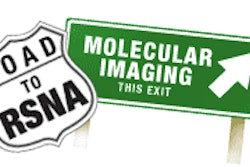CTIMI to unveil new products, enhancements, and tracers at the show.
Molecular imaging developer CTI Molecular Imaging is introducing a host of new products, services, and applications at the 2003 RSNA. The Knoxville, TN-based vendor will be showcasing new PET technology, software, add-ons, radiotracers, and a Web-based service solution.
The Concorde Microsystems microPET Focus, which CTI distributes, represents the firm's latest breakthrough in microPET scanners. The family of microPET scanners (the R4, P4, and Focus) are dedicated animal PET systems that provide functional in vivo imaging of molecular processes. By enabling researchers to conduct longitudinal studies on a single animal, microPET is an efficient and cost-effective alternative to traditional research methods, CTI said.
Greater resolving power, higher sensitivity, and greater count rate performance give the product the capacity to image a single rodent, multiple mice simultaneously, or small primates. The Focus has 24,192 lutetium oxyorthosilicate (LSO) elements compared with other microPET scanners such as the R4 with 6,144, and the P4 with 10,752.
The count rate of the Focus is 3.5 million events per second compared with the 2.1 million events per second rate on the R4 and P4 models, or 67% greater performance compared to the P4 of similar geometry. The Focus has 168 detector blocks and a bore size of 26 cm, compared with 12 cm on the R4 and 22 cm on the P4. In addition, the product is mechanically accurate within .127 mm, which ensures the PET data is rebinned to the correct location.
The device, available now in the U.S., is targeted toward research and development applications such as new pharmacological agents in drug development, gene therapy approaches, and the development of new molecular imaging assays and radiotracers, as well as the study of animal models. The capability to make repeat measurements in individual animals is particularly valuable in animal models that have high intrinsic value or that exhibit high variability, CTI said.
The company will be shining the spotlight on its new digital imaging chain, which more than doubles the count-rate performance of the company’s LSO-based PET/CT scanners, according to the firm.
Pico-3D Processing features electronics that are specifically designed to take advantage of LSO detector material, which is faster and has higher light output than bismuth germanate (BGO) scintillator material, according to CTI. Pico-3D is especially useful for low-dose clinical oncology applications and for the short-lived tracers used in cardiology and research.
Pico-3D digitizes the output from each LSO detector every 500 picoseconds, according to CTI. It also features 10-bit energy sampling, which improves system energy resolution, and uses a five-second coincidence window. The product is available now.
On the software front, CTI will be debuting Reveal-MVS, a patient management and care application for PET. The software features image registration and fusion display techniques with any pair of PET, CT, MR, or nuclear medicine image data—from all the major equipment vendors, CTI said. It also supports DICOM storage of PET, CT, MR, and nuclear medicine image data.
The Reveal-MVS also includes radiation therapy contouring tools with optional RTist applications and optional Cardiac PET image analysis. The company said the PC-based product has a simple interface compatible with other desktop applications, which minimizes the learning curve for users while enabling the communication of imaging results quickly and easily. The software is available worldwide.
The company is also showing its Reveal Network Solutions service, a Web-based software product branded with a subscribing practice’s corporate identity. The service is targeted toward outpatient PET imaging centers, and provides these facilities with an extensive selection of professional tools.
Educational and operational offerings include provider-branded patient and physician PET educational portals, free online CMEs, referring physician image and report viewer, management reporting tools, patient scheduling software, electronic FDG ordering, HotLab software, and secure image and file transfer capabilities.
In addition, the firm includes marketing support such as a company specialist who works directly with the provider on marketing and reimbursement support. A marketing materials package includes more than 30 different PET collaterals totalling 850 pieces, more than 45 customizable PET marketing files, and a speaker’s program along with Academy of Molecular Imaging membership, CTI said.
CTI affiliate PETNET Solutions is introducing the radiotracer Na (18)F for PET bone imaging. The tracer has a higher accuracy in detecting both osteolytic and osteoblastic metastases, a greater differentiation rate between benign vs. malignant lesions, and an improved capability to identify the extent of bone metastases, according to the developer.
The PET tracer, available now in the U.S., shows a higher spatial resolution, a higher bone-to-background ratio (a 2:1 bone uptake and faster blood clearance), and greater sensitivity than conventional Tc-methylene diphosphonate (MDP) SPECT imaging for metastatic bone disease patients, said CTI.



















